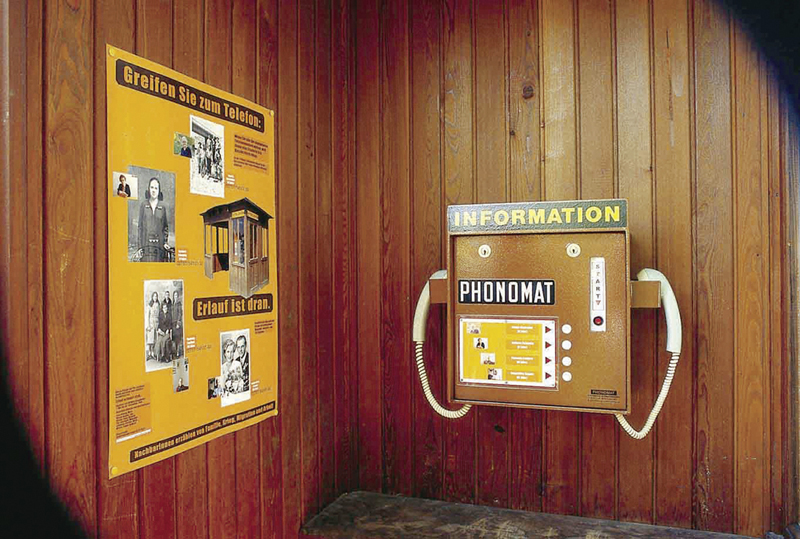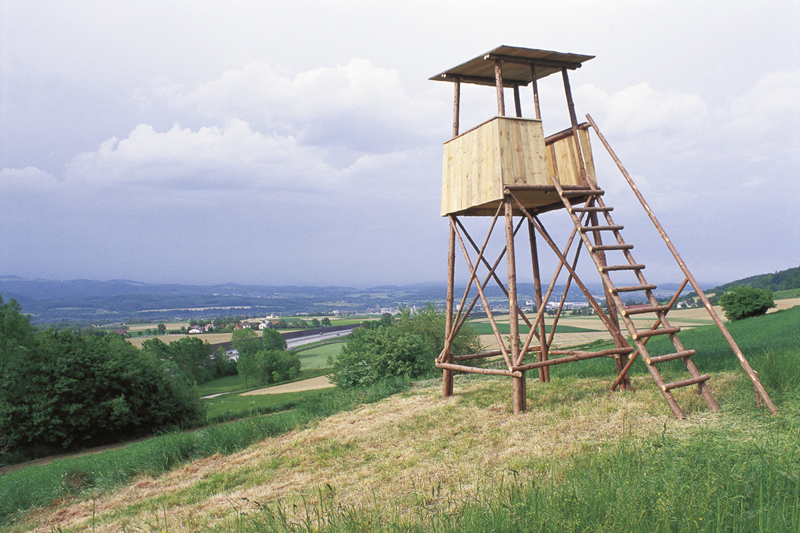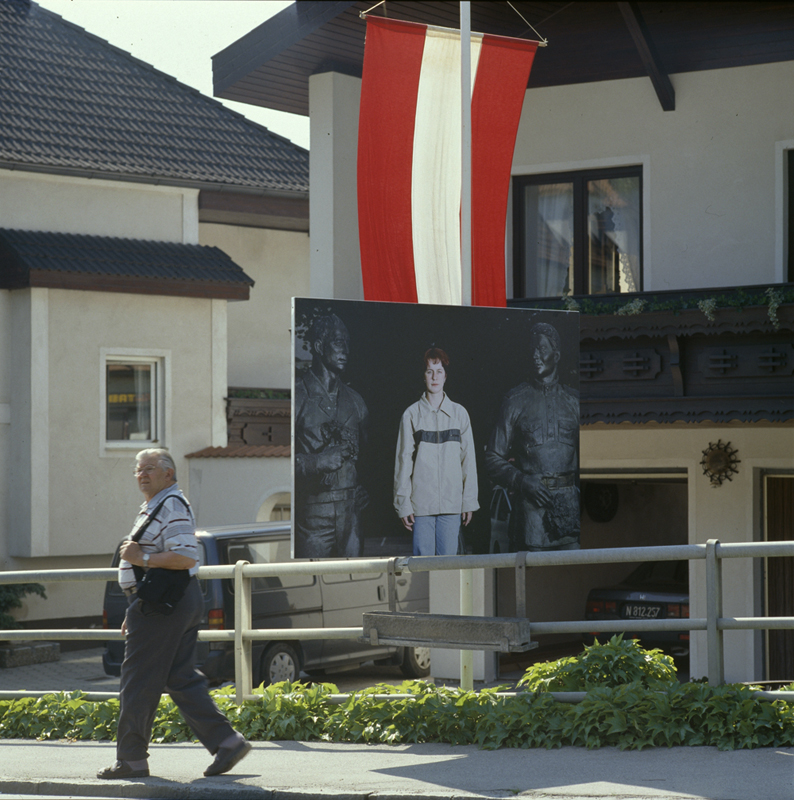DE | EN
ABOUT
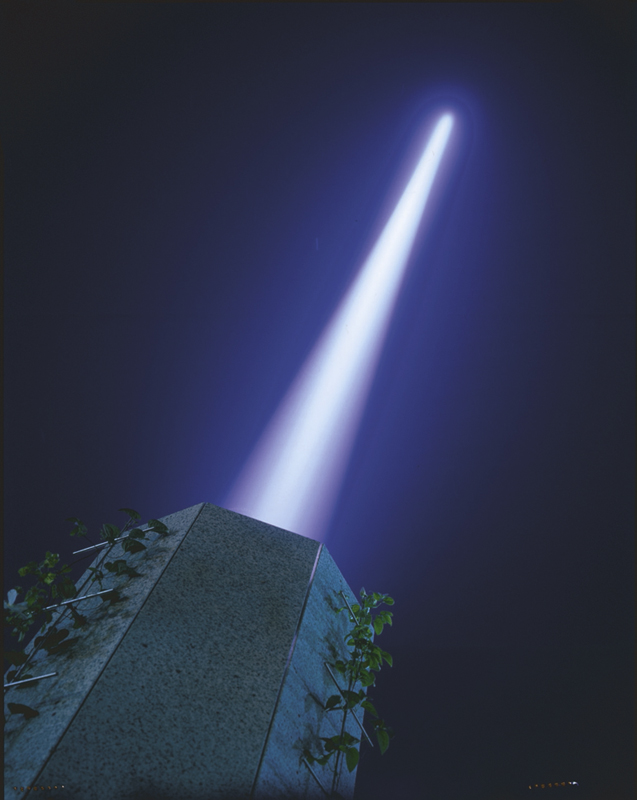
Peace memorial by Jenny Holzer, 1995
© Christian Wachter
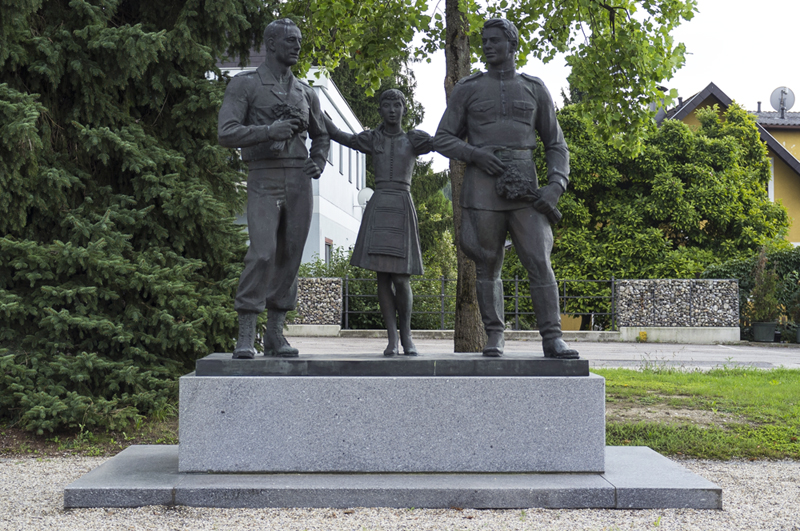
Peace memorial by Oleg Komov, 1995
© Remigio Gazzari
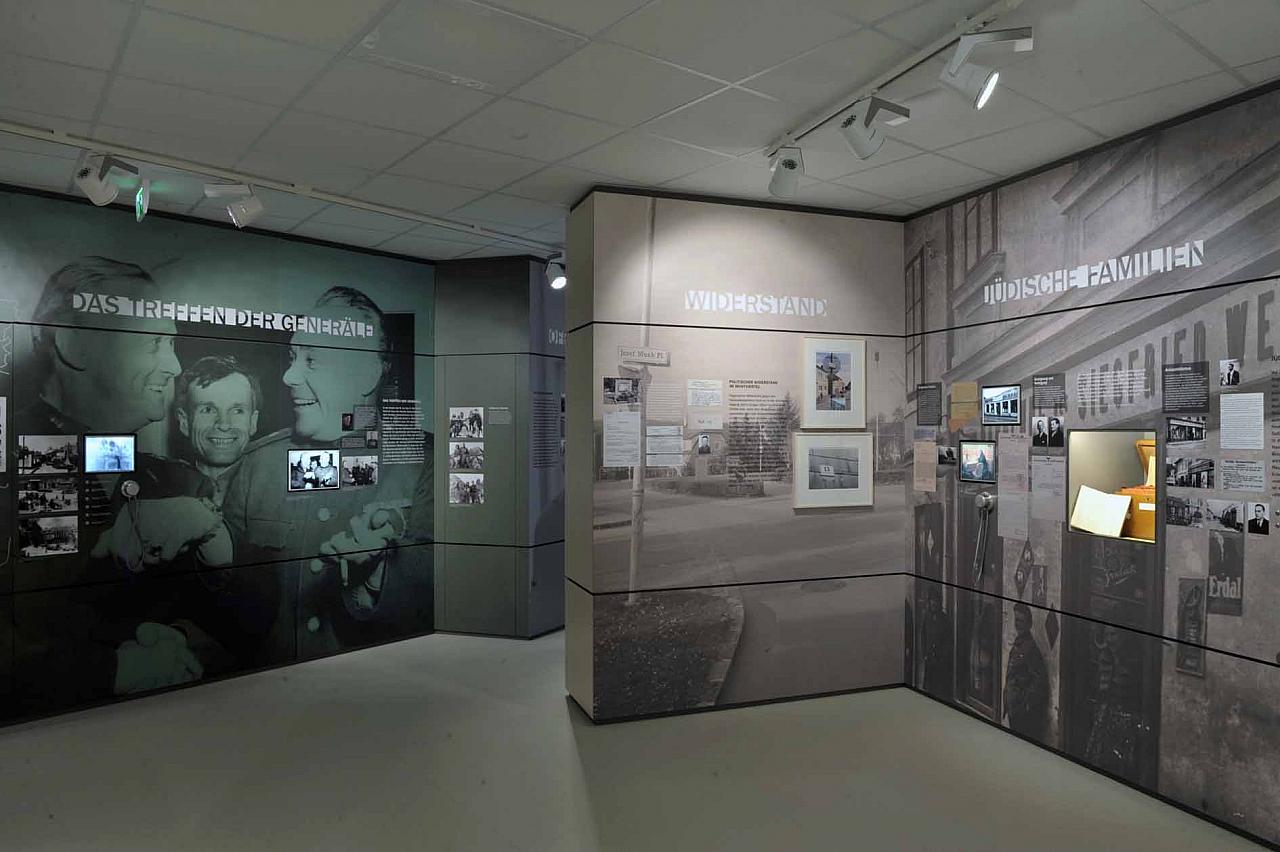
Ansicht Museum, © Wolfgang Wössner
In the night of May 8, 1945, Soviet General Dmitrii Drichkin and US General Stanley Reinhart met in Erlauf to celebrate the Allied victory and official end of the war in Europe at one minute after midnight. Roughly twenty years after the historical meeting between these two generals, Ernst Brod and Frank Schanzer, two Jewish men who had emigrated to the US, sent US military documents that they had found about the event to Erlauf. As a result of this reminder, a memorial plaque was officially unveiled by politicians at the town hall a few years later. Since then, the city of Erlauf has continued to cultivate the memory of this event. Despite its small size, no other town in the German-speaking world has continued to combine the themes of peace, remembrance, and art quite as conscientiously and for so long as Erlauf.
The annual commemoration ceremony first organized by the community in 1965 eventually evolved into the Friedenstage (Days of Peace). This eventually led to an intensive artistic engagement with history in the public realm. Peace monuments by Jenny Holzer and Oleg Komov were erected in 1995, followed by a series of temporary art projects in public space, such as Erlauf erinnert sich (Erlauf Remembers) (2000, 2002), 17 Momente vor dem Frühling. Erinnerung an die Russen in Niederösterreich (17 Moments before Spring. Remembering the Russians in Lower Austria) (2004), and the collaborative music project AMF - Allied Musical Forces (2006) by the composer Konrad Rennert. In addition, history was explored in exhibitions in the small peace memorial, and several documentary films were also made.
The museum ERLAUF ERINNERT. Museum der Friedensgemeinde Erlauf (Erlauf Remembers. Museum of Erlauf, Community of Peace) now offers visitors many opportunities to engage with today’s history, the culture of remembrance, and contemporary art. Starting in May 2015, 70 years after the war, a permanent exhibition covering 250 square meters of floor space will explore the historic events in the town and region in 1945, the history of totalitarianism and displacement, as well as the changes and consistencies within the culture of remembrance in the Second Austrian Republic. This exhibition will be shown together with artistic works dealing with this theme. All artistic and film projects realized in Erlauf will be accessible in the Art Archive (Archiv der Kunst) and the film room. A special exhibition space will be devoted to temporary exhibitions, lectures, readings, film screenings, and educational projects, while artistic interpretations of this theme will also be shown in a part of the museum dedicated to temporary art exhibitions. The museum’s opening will be celebrated with an art project by Tatiana Lecomte.
The museum is a joint venture between the town of Erlauf and the Lower Austrian Department of Art and Culture, Public Art.
Exhibition Project Team:
Dr. Katharina Blaas-Pratscher (project director
Remigio Gazzari (curator)
Mag. Johanna Zechner (curator)
Mag. Cornelia Offergeld (curator)
Dr. Uli Marchsteiner (exhibition design)
Mag. Matthäus Maier (organization)
Scholarly Committee at the Museum Erlauf:
Franz Engelmaier (Mayor of Erlauf)
Univ.-Prof. Dr. Gerhard Jagschitz (University of Vienna)
Mag. Wolfgang Kainzner (Councilman in Erlauf)
Director Dr. Wolfgang Kos (Wien Museum)
Ing. Franz Kuttner (Former Mayor of Erlauf)
Univ. -Doz. Dr. Ernst Langthaler (Institute of Rural History, St. Pölten)
Dr. Sabine Oppolzer (Radio Ö1 Kultur)
Mag. Ulrike Vitovec (Advancement of Museums in Lower Austria)
Chair of the committee: Governor Dr. Erwin Pröll
landscape architecture: auböck & kárász
The annual commemoration ceremony first organized by the community in 1965 eventually evolved into the Friedenstage (Days of Peace). This eventually led to an intensive artistic engagement with history in the public realm. Peace monuments by Jenny Holzer and Oleg Komov were erected in 1995, followed by a series of temporary art projects in public space, such as Erlauf erinnert sich (Erlauf Remembers) (2000, 2002), 17 Momente vor dem Frühling. Erinnerung an die Russen in Niederösterreich (17 Moments before Spring. Remembering the Russians in Lower Austria) (2004), and the collaborative music project AMF - Allied Musical Forces (2006) by the composer Konrad Rennert. In addition, history was explored in exhibitions in the small peace memorial, and several documentary films were also made.
The museum ERLAUF ERINNERT. Museum der Friedensgemeinde Erlauf (Erlauf Remembers. Museum of Erlauf, Community of Peace) now offers visitors many opportunities to engage with today’s history, the culture of remembrance, and contemporary art. Starting in May 2015, 70 years after the war, a permanent exhibition covering 250 square meters of floor space will explore the historic events in the town and region in 1945, the history of totalitarianism and displacement, as well as the changes and consistencies within the culture of remembrance in the Second Austrian Republic. This exhibition will be shown together with artistic works dealing with this theme. All artistic and film projects realized in Erlauf will be accessible in the Art Archive (Archiv der Kunst) and the film room. A special exhibition space will be devoted to temporary exhibitions, lectures, readings, film screenings, and educational projects, while artistic interpretations of this theme will also be shown in a part of the museum dedicated to temporary art exhibitions. The museum’s opening will be celebrated with an art project by Tatiana Lecomte.
The museum is a joint venture between the town of Erlauf and the Lower Austrian Department of Art and Culture, Public Art.
Exhibition Project Team:
Dr. Katharina Blaas-Pratscher (project director
Remigio Gazzari (curator)
Mag. Johanna Zechner (curator)
Mag. Cornelia Offergeld (curator)
Dr. Uli Marchsteiner (exhibition design)
Mag. Matthäus Maier (organization)
Scholarly Committee at the Museum Erlauf:
Franz Engelmaier (Mayor of Erlauf)
Univ.-Prof. Dr. Gerhard Jagschitz (University of Vienna)
Mag. Wolfgang Kainzner (Councilman in Erlauf)
Director Dr. Wolfgang Kos (Wien Museum)
Ing. Franz Kuttner (Former Mayor of Erlauf)
Univ. -Doz. Dr. Ernst Langthaler (Institute of Rural History, St. Pölten)
Dr. Sabine Oppolzer (Radio Ö1 Kultur)
Mag. Ulrike Vitovec (Advancement of Museums in Lower Austria)
Chair of the committee: Governor Dr. Erwin Pröll
landscape architecture: auböck & kárász



